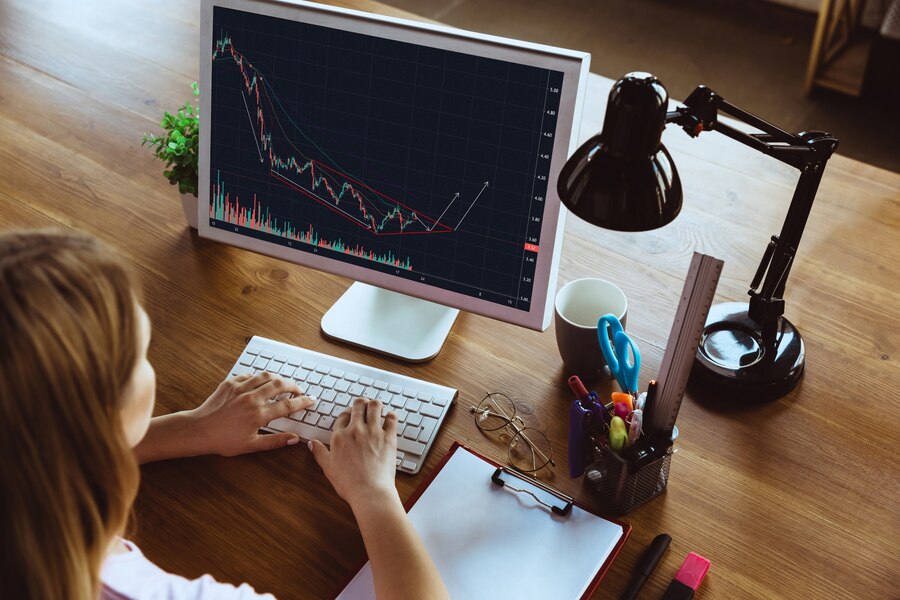Debt-Service Coverage Ratio (DSCR): Meaning, Uses, Calculation, And More

With the help of the debt service coverage ratio (DSCR), one can calculate the ability of a company to manage its current debt obligations by making use of the available resources. By calculating the ratio, the stakeholders of the company can evaluate the financial state of the company. This can give an idea of whether the company is capable enough to repay its outstanding short-term and long-term debts.
In this article, you will learn some of the general details about the debt service coverage ratio and the formula to calculate this ratio. Apart from that, you will also get an idea of how to calculate this ratio in a business situation, that is, having a knowledge of how to work. Finally, we will check the pros and cons of the debt service coverage ratio. Hence, to learn more, read on through to the end of the article.
What Is The Debt Service Coverage Ratio (DSCR)?

According to Wall Street Mojo,
“Debt Service Coverage Ratio (DSCR) calculates the ability of companies to manage their current debt obligations using the available resources. The computation of this ratio allows stakeholders to assess the company’s financial state and check if it is capable enough to repay its outstanding long-term and short-term dues.”
Basically, the debt service coverage ratio helps you to measure the available cash flow of the company to pay its current debt obligations. By calculating this ratio, investors and lenders can determine whether the company has enough income to pay off its debts or not. You can calculate this ratio once you divide the net operating income of the company by debt service, including principal and interest.
When you find out the debt service coverage ratio of a company, you will be in a better position to decide whether to invest in a company or not. Or, if you are a lender, you will be able to decide whether to approve a particular company’s loan or not, provided the company’s current availability of resources. The higher the ratio for the company, the better the chances are for the company to get more loans, credits, and investments.
Read More: Entrepreneur : Who Coined The Term ‘Entrepreneur’?
What Is The Formula Of Debt Service Coverage Ratio (DSCR)?
By determining the debt service coverage ratio of a company, you will be able to learn the financial health of the company. If the company has a lower ratio, it means that the company has a higher chance of defaulting on payments.
According to Indeed.com,
“To understand a company’s financial health, a financial analyst compares it with other companies operating in the same industry. Comparing the DSCR ratio of an airline company, which uses larger debts, with a software company, which uses minimum debt and more equity financing, is inappropriate because both companies have different debt structures.”
Here is the formula for the debt service coverage ratio (DSCR):
| Debt Service Coverage Ratio = Net Operating Income / Total Debt Service |
Here, Net Operating Income = Total Revenue – Certain Operating Expenses
and Total Debt Service = Interest + Principal Payments + Lease Payments
How Does The DSCR Work And What Are Its Uses?
According to Investopedia,
“The debt-service coverage ratio is a widely used indicator of a company’s financial health, especially those who are highly leveraged with debt. Debt service refers to the cash needed to pay the required principal and interest of a loan during a given period. The ratio compares a company’s total debt obligations to its operating income.”
For a company to get loans, there is a minimum level the company must be able to match. Various lenders, stakeholders, and partners target the debt service coverage ratio metrics of the company, as well as terms and minimums related to it, before approving a loan.
When it comes to corporate finance, the debt service coverage ratio of a company shows its ability to pay its debt. This value is really helpful for lenders and investors. On the other hand, when it comes to personal finance, the debt service coverage ratio helps the bank to find out its interest rate.
In typical cases, banks, lenders, and financial institutions prefer a higher debt service coverage ratio for a company. Having a higher DSCR shows that the company has sufficient funds to pay off its debt obligations and the company can make payments faster.
Pros And Cons Of The Debt Service Coverage Ratio (DSCR)
The following are some of the major pros and cons of the debt service coverage ratio for determining the loan payoff ability of a company:
Pros Of Debt Service Coverage Ratio
Here are some of the major pros of the debt service coverage ratio formula:
- Monthly calculation of the debt service coverage ratio helps a company evaluate its average trend over some time and predict future ratios.
- It helps in budgeting and strategic planning.
- It helps in comparing and assessing the company in regard to its competitors.
- It helps to better assess the long-term financial health of the company.
- A truer representation of the operations of a company, as compared to other ratios.
Cons Of Debt Service Coverage Ratio
Here are a few cons of the debt service coverage ratio formula:
- Using operating income to calculate the debt service coverage ratio can overstate the company’s income since not all expenses are shown.
- With accrual-based accounting guidance, the debt service coverage ratio is partially calculated.
Read More: What Is a Franchise, And How Does It Work? – Examples, Benefits & More
Bottom Line
Hope this article was helpful for you in getting a better idea of how the debt service coverage ratio (DSCR) works and how to calculate it using the formula. It basically shows you whether a given company has enough income or cash flow to pay its current debt obligations. This can give an idea to lenders and investors about a company’s ability to pay back loans.
You can also find out the debt service coverage ratio by calculating the net operating income of the company and comparing it with the debt service, including principal and interest. Do you have any more suggestions on how to use this ratio to evaluate a business? Share your ideas and opinions with us in the comments section below.
Read Also:













